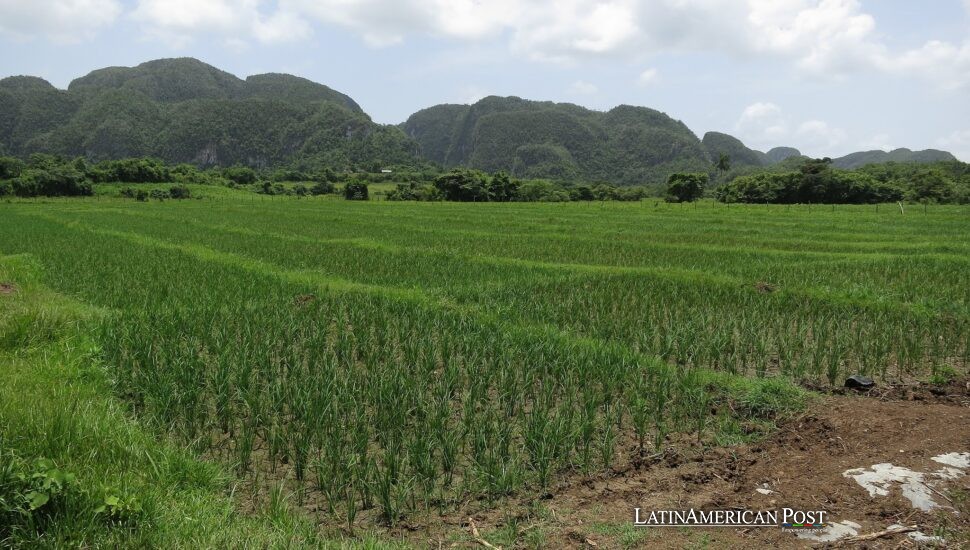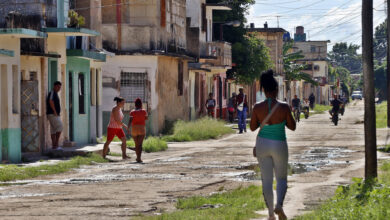Foreign Tractors and Familiar Hunger: Cuba Turns to Vietnam to Reclaim Its Rice Fields

In the sun-scorched plains of western Cuba, where silence once fell heavy on abandoned farmland, the rumble of Vietnamese machinery now cuts through the heat—reviving not only rice production, but an old alliance reborn in pragmatism over ideology.
Breaking a Revolutionary Taboo with Seeds and Steel
In Cuba, farmland has long been sacred ground—claimed by the revolution and held in government hands since Fidel Castro’s sweeping 1959 nationalizations. For six decades, foreign capital was barred from the soil. But today, in Los Palacios, a town tucked between sugarcane fields and sun-bleached highways, that line has been crossed.
On 1,000 hectares of rich paddy, a new venture is taking shape: Vietnam’s Agri VMA has signed a three-year usufruct lease—the first of its kind since the revolution—on land that Cuban officials admit they can no longer farm effectively. The fields, now gleaming emerald, stretch out under a horizon of low-lying mountains and rusted silos.
“We simply don’t have the fertilizers, seeds, or spare parts to cultivate what we own,” said Ariel García Pérez, director of Cuba’s Empresa Agroindustrial de Granos Los Palacios, during an interview with DW. As he spoke, a Vietnamese-made harvester trundled behind him, chewing through the rice fields and unloading grain into waiting trucks.
García Pérez’s farm once planted far more. Today, he says, they’re operating at just 25% capacity. That vacuum has drawn in the Vietnamese—not as charity, but as partners, bringing with them hybrid rice varieties, diesel, fertilizers, and six agronomists ready to pull Cuba’s stagnant yields into the modern age.
The early numbers are striking: 6.75 tons per hectare, compared to Cuba’s national average of 1.7. It’s not just a technical leap. It’s a quiet revolution of another kind.
A Harvest Rooted in History
Cuba and Vietnam were once Cold War siblings, bound by shared battles against Western influence and long speeches on self-reliance. But this time, their relationship is strictly business—with a nod to that old friendship.
Agri VMA pays Cuban workers directly—an unheard-of arrangement in a system where labor is typically funneled through state-run employment agencies. The company also pays García Pérez’s enterprise for milling, transport, and storage services, creating a strange but compelling hybrid model of private initiative within a socialist framework.
“They brought everything,” said Tran Trong Prai, a Vietnamese rice scientist, as he checked moisture levels in the grain. “Fertilizer, harvesters—even the mechanic. Inputs are life,” he told DW, watching as a group of young Cuban men piled into the back of a flatbed truck.
And for once, life is showing signs of resilience. The Vietnamese model is built on efficiency and replication. If the pilot proves scalable, officials say they may allow similar ventures to spread to other struggling provinces like Camagüey and Granma, where hurricanes and drought have pushed rice farming to the brink.
The Cuban state retains ownership of the land and control over where the harvest ends up. But the know-how, the machines, and the seeds—those now come from elsewhere.
From Imports to Independence, One Grain at a Time
Cuba consumes about 700,000 tons of rice each year, a staple on nearly every table. But local production in 2024 sank to just 80,000 tons, a fraction of what it was six years ago. The shortfall—driven by fuel shortages, economic crisis, and crumbling infrastructure—forces the island to import the rest, often from far-flung suppliers in Brazil, Uruguay, or even Vietnam itself.
This costs the state over $300 million annually, a staggering figure for a country already crippled by currency shortages and sanctions. The U.S. embargo complicates matters further: shipping insurance is expensive, freight is unreliable, and contracts are often fragile.
“If we can grow Vietnamese rice here,” said García Pérez, “the rice stays here. It’s cheaper than importing it.”
Under the current deal, Agri VMA owns the full harvest, but the Cuban government has first purchase rights—and is already exercising them. The price hasn’t been disclosed, but officials suggest it’s lower than current import costs.
Economists see the deal as a low-risk gamble for Cuba. The Vietnamese front the capital, absorb the logistical headaches, and bring the expertise. The state keeps control of the crop and learns in the process. In return, Vietnam gains access to land and an opportunity to export its agricultural model to Latin America.
As one senior Cuban agriculture official put it, “We didn’t change ideology. We changed tactics.”
Uneasy Questions Beneath a Promising Harvest
Not everyone is clapping for the combines.
Veteran agronomist Inés Castillo worries that the model—leasing Cuba’s most fertile land to outsiders—may widen inequality between high-yield zones flush with foreign inputs and surrounding cooperatives still stuck in scarcity. “The gap becomes more visible when the tractor next door runs on foreign diesel,” she said in a phone interview.
Others fear a slippery slope: if rice succeeds, what comes next? Sugarcane? Citrus? Tobacco? Will the very crops that defined Cuba’s revolutionary independence be opened to foreign capital?
But officials insist the urgency is too great for purity tests. “Empty stomachs don’t care about ideology,” said a senior official close to the Agriculture Ministry.
The Vietnamese seem to understand the delicate balancing act. Nguyen Van Thuan, Agri VMA’s Cuban operations manager, told DW that they came prepared for politics. “We’re here for business, but also friendship,” he said, noting that the company now delivers a portion of its harvest directly to local schools—a symbolic gesture of goodwill before the formal sales process even begins.
Next season, the team plans to test salt-resistant rice strains—a response to rising soil salinity driven by climate change and sea-level creep, both major threats to Cuba’s food security.
It’s early. The experiment could stall. Politics could interfere. But for now, in Los Palacios, the rows are growing, the trucks are moving, and Cuban dinner tables might soon carry a grain once shipped across oceans—now grown just down the road.
On the edge of a rice field once thought barren, a Vietnamese flag flutters beside Cuba’s own. It’s not just a symbol of diplomacy. It’s a sign of what happens when we need to rewrite the rules, and when old allies trade ideology for action.
Also Read: How Ceviche and Pisco Quietly Powered Peru’s Rare Earth Minerals Pitch to India
As the combine turns toward its next pass, scattering straw into the air, it’s not just rice that fills the truck bed. It’s the weight of a gamble—and the hope that this time, it might just feed the future.




